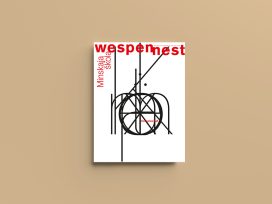The Decline of Fun
In a fascinating addendum to Native Son (1940), the novelist talked about “the deep fun” of writing the book, and his sense that the nightmarish but weirdly comic saga of an illiterate black killing an upper-class white was universal: “I made the discovery that Bigger Thomas was not black all the time; he was white, too, and there were literally millions of him, everywhere.” But this didn’t mean that Wright thought of his character as a cipher: on the contrary, Bigger had to be individualized because “the main burden of all serious fiction consists almost wholly of character-destiny and the items, social, political, and personal, of that character-destiny.”
Wright’s essay could stand as a credo for all fiction writing, especially the best American character-driven narratives (Huck Finn, Gatsby, Moby Dick) with their peculiar blend of naturalism and American Absurd. (Think of the eyes of Dr. Eckleburg in Gatsby, the long disquisition on a whale’s foreskin in Moby Dick!) One can understand why such a book–and Native Son belongs in that category– would be great fun to write. (But not funny haha, a purer, deeper kind of fun: the fun of putting one’s ego aside and being swept along to places one has never been.) While one doesn’t exactly laugh when Bigger Thomas suffocates Mary Dalton and stuffs her into a furnace, one may chuckle ruefully: there is something satisfyingly macabre, almost Poe-ish, in this tragedy of two people separated by a gulf of misunderstanding.
Whatever else that might be said about American literature of the last 30 years, it didn’t produce a single memorable character, not a Bigger nor a Gatsby nor a Holden Caulfield, or offer us a novel or play that exemplified Wright’s complex sense of fun. As a group, satirists like John Barth, Thomas Pynchon, Don DeLillo came closest. They certainly tried to make their work all- inclusive as well as fun (at least in the sense of odd and macabre), but their humor seemed strained, self-conscious; instead of being transported by characters playing out their destinies, one felt manipulated by the novels’ grand designs. In fact, not even TV or movies produced many fictional cultural icons during this time: Elvis, Muhammed Ali, Janis Joplin, Lee Harvey Oswald, Richard Nixon, Malcolm X., Bill and Monica preoccupied us much more than any invented characters.
But if not character, what did drive the literature of the last 30 years? Style. Narrowness. Caution. Instead of attempting to be inclusive, most writers (and “serious publishers”) focused on a single gender, minority, social class, cultural or ethnic group. They may have done it out of despair over a dwindling readership, an eye to the niche market, laziness, lack of talent, lack of experience, an atmosphere of cultural separatism (a sad byproduct of the 60’s)–or all of the above. Most novels, stories, poems degenerated into thinly-veiled autobiography, with only token fictional gestures, until even the pretense of writing fiction was dropped, and writers just out of college flooded the market with their memoirs. By the end of the century, Wright’s belief in the possibility of a universal fiction was not only old-fashioned, it was politically incorrect. And, though written with porcelain-like fineness, most of the work that was produced (even when funny) wasn’t much fun at all.
If “literature” became style-driven, best-sellers of the last 30 years became formula- driven. Since World War II (and probably long before), a gap existed in American letters between High and Low Culture, but it was in that gap that most notable American writers of the past flourished. I’m thinking of authors like Hemingway, Cather, Steinbeck, Faulkner–essentially realistic writers who nonetheless had recognizable styles and even a taste for Large Themes (the movement of Time, History) that they tried to integrate into their narratives without too much clumsiness. In the last 30 years, despite attempts by writers like John Irving and Tom Wolfe, no one was able to fill that gap. As literature descended into diary writing, best-sellers removed themselves farther and farther into fantasy; borrowing a little from TV soap operas, a little more from porno and mysteries, they ultimately became vessels for simplified versions of our national dreams (and nightmares): horror, wealth, crime, paranoia, sex, celebrity.
You might say that during this period, America lost its capacity to imagine convincing narratives about itself; life became too tense and complicated to provide the necessary dreaming-space. Or maybe the reasons were a lot more practical.
Consider the Allegory of Publishing and Commerce. By now, the story is familiar: How an aggressive, uncouth (yet vital) young man named Commerce, who made his fortune selling products like toilet plungers and toothpaste, pursued the noble, impoverished, neurotic virgin called Publishing. Before the late 1960’s, Commerce had hardly noticed her–she was too quiet, too distant– but now, maybe because he was bored with easier conquests, he fell madly in love. In his heart Commerce knew that books could be sold like toothpaste, if only Publishing would be his. Not inattentive to his advances, Publishing was in a quandary: should she retain her purity and live on praise and modest sales, or submit to Commerce and produce books directed at the, gasp!, masses?
At first she resisted. I like you, she told Commerce, and your big advances, plush offices, glitzy book covers, movie deals. I’m attracted to your energy, I want to make money, but I don’t know if I’m… ready. My authors work slowly; they need time, time, time.
Commerce didn’t understand. Hadn’t he showered her with money and respect? Why wasn’t she equally devoted to him? Couldn’t she insist that her authors produce blockbusters fast, now that books really were beginning to sell like toothpaste in supermarkets, airports, chain bookstores and over the Internet?
Under pressure, Publishing went a little schizo. She put most of her efforts (and Commerce’s money) into developing books that retained some of the qualities of realistic fiction–especially the attempt to describe, however superficially, a cross-section of society–but she also recognized the public’s need for fantasy, for a lack of originality, for the comforting repetition of a good guys/bad guys fairy tale after a hard day at the office. To this end, she promoted authors like Stephen King and Robert Ludlum and Danielle Steele, until their sales grew so hypertrophic that they took up nearly all the shelf space once reserved for a variety of more “serious” authors. But she couldn’t give up literature completely. And Commerce didn’t want her to; after all, didn’t he love her? Of course she could have her literature, as long as it was ethereal and small-boned, published in minuscule editions, a literature as delicate and pretty (and innocuous) as her diary.
Of course it wasn’t this simple. And of course during the last 30 years the U.S. produced some good authors and good books. (My list includes Kathy Acker, Bret Easton Ellis, Grace Paley, Maxine Hong Kingston, Nicholson Baker, David Foster Wallace, the playwrights Sam Shepard and David Mamet; yours no doubt includes those I’ve overlooked.) The brutal truth is, in the last 30 years remarkable work hasn’t emerged in any of the arts, including those that supposedly stole literature’s market-share of public attention. No matter how many explanations one has for this, none quite works. Did the political radicalism of the late 60’s translate, not into Walter Benjamin’s hoped-for artistic radicalism, but into artistic conservatism, a distrust of the individual voice? Did Art lose its vitality because the Western world swung to the Right in the 70’s and 80’s, bringing with it what might be called Capitalist Realism? Did Commerce kill Art, or was it suicidal? Has sped-up cyber-time made it impossible for us to concentrate on a jazz solo, a long tracking shot in a film, a novel in which characters speak for more than two sentences at a time? Or is my 15 year old son right when he says that the Art is in computer graphics and commercials? The only thing we seem to have learned at the end of this exhausting century is that no theory fits all the facts: all we have left are questions.
And yet literature doesn’t want to die. In the U.S. small publishers keep popping up, thumbing their noses at the conglomerates. Poetry readings draw hundreds, if not thousands, of young people. Hiphop reflects a love of the sound of words, if not always their meaning. And even the fun of writing seems not to go completely unnoticed. In a recent essay called The Nature of the Fun, the novelist described the development of a fiction writer. Initially writing stories to amuse himself and mask his weaknesses, he soon learns that it’s only by revealing the most painful sides of himself (as did in Native Son, as any major writer does) that he can tap into the real fun:
The fact that you can…sustain the fun of writing only by confronting the very same unfun parts of yourself you’d first used writing to avoid or disguise is another paradox, but this one isn’t any kind of bind at all. What it is is a gift, a kind of miracle, and compared to it the rewards of strangers’ affections are as dust, lint.
Wright would have liked that.
Published 31 May 1999
Original in English
Contributed by wespennest © George Blecher
PDF/PRINTNewsletter
Subscribe to know what’s worth thinking about.



